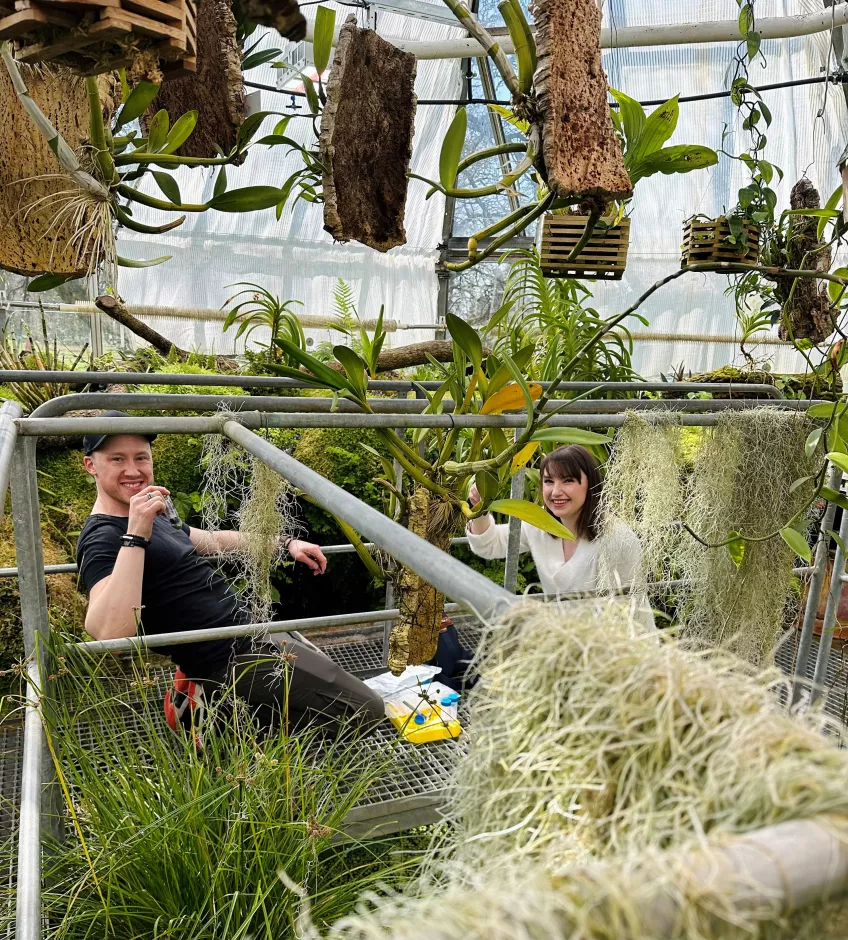Diatoms in the greenhouse
Did you know that the greenhouse at the Lund University Botanical Garden has more than “just” 2,000 different plants? Geology PhD students Karolina Brylka and Ethan Silvester visited the greenhouse in April and took water and soil samples to hunt for tiny, but stunningly beautiful, diatoms!
Diatoms are considered “protists,” which is a catch-all classification for eukaryotic organisms (i.e. not bacteria or archaea) that aren’t animals, plants or fungi. They are a type of algae, and are responsible for producing around 20% of all oxygen on Earth every year! Diatoms are mighty, but small.
They can be as small as 5 μm (micrometers) or as large as 2 mm (which is 2000 μm) in size! By comparison, the average human hair is around 100 μm wide.
Karolina and Ethan are exploring which species are hiding right here in the heart of Lund. In April they collected soil and water samples and are using simple laboratory processing techniques to enable the diatoms within to be identified. They will then use light microscopy and a high-magnification Scanning Electron Microscope to collect images of the species they find.
This autumn, signs will be placed around the greenhouse with photos and information about the species found in each location.
Come and see for yourself what they have discovered!
Karolina and Ethan are both diatomists studying at the department of Geology here at Lund.
Karolina is studying the evolution of diatoms, especially in deep time. Karolina is searching for the oldest diatoms in rocks from millions of years ago.
Ethan is studying the diatom communities found in sediments which have accumulated in lakes over the past 1000 years. Ethan is studying the environmental impacts of major volcanic eruptions using lakes from Sweden and Finland.
This project was funded by ERC and Wallenberg grants of Daniel Conley.


